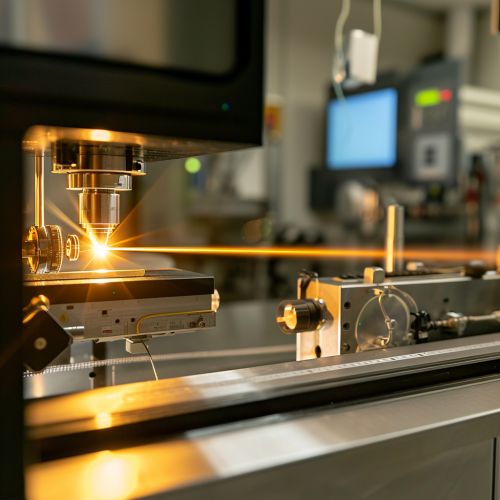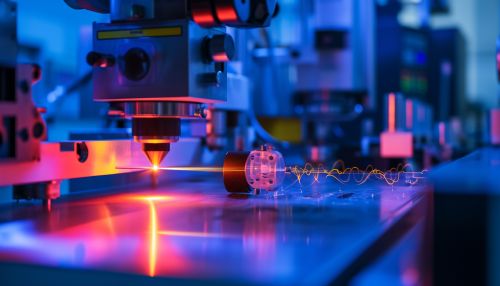Femtosecond laser
Introduction
A Femtosecond laser is a laser system that emits optical pulses with a duration well below 1 picosecond (one trillionth of a second). The term "femtosecond" refers to the duration of the pulse, which is on the order of 10^-15 seconds. These lasers have found applications in a variety of fields, including physics, chemistry, biology, and medicine, due to their ability to interact with matter in unique ways.


History
The development of femtosecond lasers has been driven by advances in ultrafast laser spectroscopy, a field that studies the interactions between light and matter on extremely short timescales. The first femtosecond lasers were developed in the 1980s, following the invention of the mode-locked laser in the 1960s and the chirped pulse amplification technique in the 1980s.
Principles of Operation
Femtosecond lasers operate on the principle of mode-locking, a technique that synchronizes different modes of a laser to produce a single, ultra-short pulse. This is achieved by introducing a nonlinear optical element into the laser cavity, which modulates the phase of the light waves and locks the modes together.
Types of Femtosecond Lasers
There are several types of femtosecond lasers, each with its own unique properties and applications. These include titanium-sapphire lasers, fiber lasers, and dye lasers. Titanium-sapphire lasers are the most commonly used type of femtosecond laser, due to their broad tuning range and high peak power.
Applications
Femtosecond lasers have a wide range of applications, from basic research in physics and chemistry to practical applications in medicine and industry. In the field of optical microscopy, for example, femtosecond lasers are used in two-photon excitation microscopy, a technique that allows for imaging of living tissue at a high resolution and depth. In medicine, they are used in laser surgery, particularly in procedures such as LASIK eye surgery.
Future Directions
The field of femtosecond lasers continues to evolve, with ongoing research aimed at improving the performance and capabilities of these lasers. Future directions include the development of more compact and cost-effective femtosecond laser systems, as well as the exploration of new applications in areas such as biophotonics and nanotechnology.
